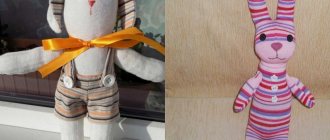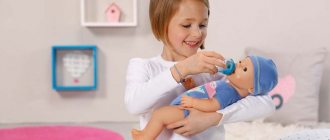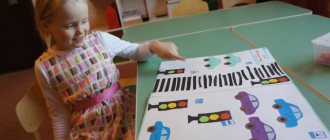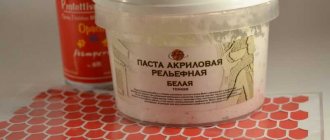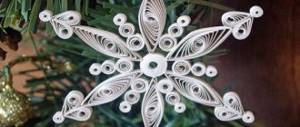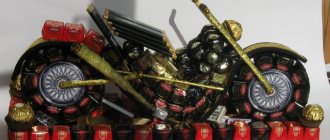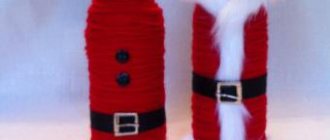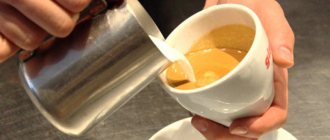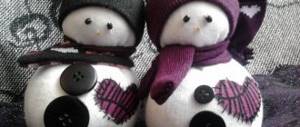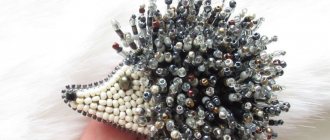Wall pockets
- This is an excellent solution for organizing space in an apartment or house. Organizers of this type take up little space and can perfectly complement or complete a designer’s interior design. Products in matching or subdued tones will help emphasize the style of your home, while contrasting and bright ones will add a touch of joy.
A useful panel can not only be hung on the wall, but also mounted on the door of a room, closet or inside it. There are a huge number of options and varieties, as well as models of useful organizers. Everyone will definitely find a product to suit their taste.
This useful device was held in high esteem in Soviet times, since the furniture of that time was far from modern functionality. In home economics magazines one could often see step-by-step instructions for making fabric stands with pockets and elastic bands for attaching small items. There you could also find a pattern and recommendations for choosing material. This description was what today we call a step-by-step master class. Experienced housewives took the idea as a basis and created it. The girls also sewed pockets during their home economics lessons.
Today, pockets for the wall can be easily purchased in online stores, but it is more pleasant to make them yourself.
Types of pockets on the wall
Wall pockets can be divided into several categories:
- According to the intended purpose: for the kitchen, bathroom, children's room, garage, for example.
- Frame and frameless. The product can be soft or have a rigid base made of cardboard or plywood.
- By functionality, for example, universal or special, such as holders for newspapers, documents, slippers, combs, telephone or TV remote control.
- In appearance: single or in the form of a stand.
- According to the method of fastening: on loops, a rod, Velcro, or simply screwed tightly to the wall with self-tapping screws.
Also, wall pockets can serve a decorative function or, as they said in an old cartoon from the Soviet era, cover a hole in the wall.
Young mothers store small things in pockets on the wall, and their grown daughters happily hide their “treasures” and dolls.
A variety of materials are suitable for making useful things.
Organizers for small items can be not only rag, but also made from:
- oilcloths;
- silicone;
- felt;
- plastic;
- newspaper tubes.
To make a useful device, scrap materials can be used, such as scraps of boards, plastic flasks or bottles. In garages and utility rooms, craftsmen even use cans to make improvised “pockets”!
Knitters can crochet or knit pockets, and seamstresses can easily turn even old jeans into pockets!
A little patience and imagination - and a homemade organizer will decorate the hallway or help tidy up the pantry. This convenient invention will also be useful for schoolchildren.
Lately, people are increasingly asking to bring wall pockets to kindergartens. There they are placed in lockers and a change of underwear, shoes and the child’s personal belongings are stored there.
Varieties
Hanging pockets differ in the method of fastening:
- loops or eyelets - they are traditional and most reliable, fixed to the doors with screws or hung on hooks;
- elastic - does not require additional fasteners, but sags under the weight of clothing;
- adhesive tape with a folding top, easy to attach, quick to remove;
- fastenings with double-sided tape are not practical, but they “save” in a situation where for some reason it is impossible to screw a nail or screw into the door.
Pocket stand
In order to make multifunctional pockets on the wall for storing small items, you will need to prepare everything that is shown in the photo, as well as:
- threads for hand sewing and a set of needles;
- machine sewing threads No. 40 yellow, blue and gray;
- sewing machine with needle No. 80;
- tailor's pins;
- ruler;
- soap for marking or a special washable marker.
Due to the fact that the pocket will have a single fastening, for this purpose we use coat hangers with a swivel hook.
You can use a stand hanger left over from baby clothes.
Fabric colors may differ from those offered. On the pockets you can make an applique or stick thermal transfers of the corresponding theme.
If the color is monochromatic, then the fabric consumption for making pockets on the wall is eighty centimeters with a width of one and a half meters. This size fits:
- bias bindings;
- patch opaque pockets;
- main canvas.
If the pocket is a combination of several colors, then divide the specified amount of fabric into three parts: the front side and pockets, the back side and material for cutting bias tapes for silicone trim and rag linings.
You need to take about 30 centimeters of silicone sheet with a width of about twenty meters.
Pattern
As such, there is no need to create patterns for pockets on the wall. The procedure for this stage of sewing is as follows:
The next stage of work will be sewing the pockets together.
Assembly
Assemble the textile wall pocket in the following order:
If you change the size of the pockets, you can make pockets for toys.
Wall mount
Fastening fabric pockets to the wall is easy. To do this, you just need to drive a nail into the wall or screw in a self-tapping screw with a “new home”, and hang the organizer filled with small things, shown in the photo, on it.
A similar pocket for cosmetics belongs on the wall next to the mirror in the bathroom.
If you change the size, you can get a convenient organizer for other hygiene items: brushes, tubes of toothpaste, hand cream, pumice stone and heel files.
How to sew pockets for small items with your own hands: master class
The basis of future pockets is made of dense, possibly furniture fabric. If necessary, the base can be duplicated with non-woven fabric. Pockets can be sewn from any fabric of a suitable color, which must be reinforced with a border. Pockets can be voluminous or flat. Volume is obtained by creating a fold along the bottom edge of the pocket.
The side sections of the compartments are processed with the top edges. On the lower raw side, two opposing folds are laid. Next, you need to attach the pocket to the base at its future location, lower the top edge down, holding the cut with the folds. You will end up with an inverted pocket with the outside facing out. The part is attached to the base with the bottom cut, after which the pocket should be raised up. On the front side, the side cuts are stitched along the line of the bias tape.
Shallow pockets can be fastened with buttons or snaps. It’s not difficult to make such a convenient organizer for small items with your own hands, and it would be appropriate not only in the hallway, but also in the bathroom.
Organizer for slippers or towels
To complement the cosmetics organizer, you can sew a simpler version for towels or paper, which will look like in the photo. Sewing it is very simple. To do this, you will need three strips of fabric of different lengths (80 cm, 120 cm and 140 cm) and bias tape.
All you need to do is edge the strips with binding and then sew them together on one side with a straight stitch. The shortest strip should be inside.
The next step is to create the pockets. To do this, divide the longest strip into three parts and draw a line between them. A strip 120 cm long is divided in half and the boundaries are also marked. Markings are also applied to the main canvas, dividing it into three and two parts, respectively.
The lines are laid in order of priority, and then the bottom of the canvas is secured with bias tape.
A strip with loops is sewn along the top, and as a result you get a simple and very convenient organizer for towels and indoor shoes.
In conclusion of the article, I would like to note that hand-made wall pockets will not only help save money on the family budget, but will also provide an opportunity to properly organize the space and also decorate the house.
Pockets in a kindergarten locker
So we have grown to kindergarten. I decided to sew the pockets myself. Of course, similar things are sold on the market, but I wanted to make my own. I sewed it quickly and without problems. I'll share my experience
.
I measured the dimensions of the cabinet door in advance.
I bought a simple oilcloth for household purposes. store (it’s kind of thick) with a bright, childish drawing.
I cut out the base. In my case, it is a rectangle 22*79cm (here the drawing does not play a special role, since it will be covered with pockets).
I found some bias tape at home in a contrasting color, so I used it to cover the top edge of each pocket.
Next, on each of the 3 large pockets I made markings for folds (it turned out 4 marks at 6,12,18,24 cm). I placed small folds: 2 to the right, 2 to the left of the center, secured with pins. Folds are needed so that the pockets are voluminous and not flat. Some people also use an elastic band around the edge of the pocket for this.
I'm starting to collect. I work on the bottom pocket first. The distance from the bottom of the fabric (main) to the place where the pocket is sewn is about 4 cm.
I place the pocket tightly on top of the main one face to face down with the pattern so that the bias tape is at the bottom and the folds are at the top. I sew with a simple stitch on a sewing machine at a distance of 0.6 cm from the edge. I remove the needles and lift up the pocket. The front side is clean, the seam is inside the pocket. I connect short sections to the main fabric with pins. I sew the other 2 pockets in the same way. The distance between the top of one pocket and the bottom of another is 1-1.5 cm.
When the large pockets were sewn, I sewed a small pocket into the free space. It turned out flat, just for a handkerchief.
After the pockets, I took on the entire canvas.
I had 7 cm left at the top, I folded them and stitched them once. Into the resulting space I inserted a piece of cardboard 22 cm long (along the width of the main canvas) and 3 cm wide (along the width of the fold).
I sewed bias tape around the entire perimeter, catching the edges of the pockets. I left 5 cm tails at the top of both edges for loops. I turned the loops and sewed them separately. The result is a canvas with 4 pockets, which can be easily wiped and folded with everything you need.
1 pocket - for a handkerchief; 2 pockets for changing to physical equipment; 3 pockets for a T-shirt, panties, T-shirt, shorts; 4 pockets for tights and socks.
Bright, convenient, fast, functional. The main thing is that I did it myself!
In the rhythm of modern city life, few women have the opportunity not to work, devote themselves to raising children and at the same time live a full life and not need for anything. Modern society is structured in such a way that women must work, run the house, raise children, and much more.
When the baby goes to kindergarten, a new chapter of family life opens
, with matinees, new friends, early rises and inevitable childhood illnesses. Many children have difficulty adapting to the new conditions and rules of the children's team; the requirements for discipline and general order creakingly fit into the usual rhythm of the child's life, but still this passes quite quickly in most cases.
The baby gets used to the fact that in the morning he needs to go to kindergarten, where he has new friends, teachers, an hour of sleep, his own locker with things, where he needs to leave some clothes and put on others. In addition to clothes, kids put there their toys from home and many necessary little things, which is why there is a permanent mess in the cabinets, despite all the efforts of mothers and kindergarten nannies.
Get rid of, or at least try to organize this chaos
you can use an organizer that is attached to the inside of the cabinet. It looks like a vertical row of pockets in which you can put a change of underwear (which otherwise will inevitably be lying around next to your shoes), and handkerchiefs, and runny drops, and a comb, and small . It is also important that it is convenient for a child to use such pockets - they hang according to their height, and, as a rule, they do not have complex fasteners and buttons - Velcro tape is the best fastening option for such an organizer.
In addition to the fact that hanging pockets in a locker are convenient and practical, they can also be made useful in terms of the baby’s development. Bright applications, cartoon characters, convex details like beads and
– all this develops color perception, fine motor skills, and serves as an excellent distraction if the child is capricious and does not want to let his mother go and go to the group, or is not at all eager to go to the kindergarten.
Materials and tools
So, you decided to do it yourself. What to sew such a comfortable thing from, and how to do it? Everything is simple with materials. The best option would be jeans - in any home there will be ones that you won’t mind doing the right thing. The material itself is dense, which means it must withstand sudden tensions
when the child is in a hurry and sharply tugs at the pockets, and other deformations.
In addition to jeans, thick jeans are also suitable, especially those left over from sewing baby diapers - they are originally bright and with children's drawings. In fact, any dense and durable material will do, but you should not take knitwear, as well as fabrics that stretch a lot, and when sewing, the edges crumble or curl.
In addition to the base fabric, additional materials will be required. If you are making pockets for a girl’s locker, you can also use lace or other decorative materials for decoration.
You can also use appliques - those sold in departments with fabric and accessories, or make them yourself from felt. The latter is preferable, because the applications can be made replaceable, on Velcro tape - this will be an additional distraction if the child has difficulty getting used to the new team and does not want to go to kindergarten.
You can also use beads, buttons and other decorative elements
, however, you will have to sew them, as they say, tightly - after all, the pockets on the cabinet will be an object of interest not only for your child, but also for all the other children in the kindergarten group.
In addition to the fabric, you will need all the related tools for sewing - a ruler, a pencil or chalk, scissors, a sewing machine, thread, and possibly an iron. You will also need a stick that matches the width of the pockets - it is threaded into the upper drawstring, a rope is attached to its edges, by which the pockets are hung on a nail. The organizer can be of a different design - the stick can be replaced with two loops along the edges, but then there will be two nails on which the pockets will be hung. This point needs to be discussed with the garden administration
— will they allow driving nails into furniture?
Dimensions and number of pockets
Lockers in kindergartens, as a rule, are of a standard size, but it is better to measure them first with a tailor's meter so that it is not offensive later. The total length of a piece of fabric is
the base should be about 80 cm - taking into account all the seam allowances and the turning for the fastening stick. Width – about 35 cm, also taking into account allowances for hems.
As a rule, at least three large pockets are sewn on. You can sew several small ones on top of the main pockets, for example, for a comb and for nose drops.
How to do it yourself
First you need to come up with an idea; you can spy it on a photo or invent it and develop it yourself, carefully calculating all the details and thinking through the design. Homemade has a lot of advantages:
- manufactured exactly according to the dimensions of the cabinet;
- it can be sewn from leftover fabric;
- here you can vary the size and shape of the pockets;
- decorating a product is interesting, it’s fun to do even with a child!
Sometimes kindergarten cabinets have a rounded top, in this case we sew the base taking this feature into account. Here you can place an additional compartment for a children's book or other useful little things. An organizer for a kindergarten locker should be easy to wash and be safe for children: it is not allowed to decorate your creation with small details (beads, buttons, seed beads) that children can swallow.
Required materials and tools
To sew a pocket in a closet with a door area of 80x30 cm you will need:
- 1 meter of main fabric;
- 1 meter of lining;
- interlining;
- scissors;
- threads;
- sealant for rigidity (plastic, laminate backing, foam rubber);
- Velcro or buttons for fastening;
- rubber;
- decorative elements with a children's theme (ribbons, trim, appliques, embroidery)
The fabric should be easy to wash and dry quickly. It is better not to use cardboard to stiffen the pocket; it is short-lived and tends to deform during washing.
The organizer will not fold in half when all the pockets are full if you insert bamboo sticks 1-1.5 cm thick from the top and bottom. To do this, sew a drawstring or loops on the back side of the base. The sticks should be easy to remove, because the product will have to be washed often! If plastic is used for rigidity, additional fixation with sticks is not required, but it is necessary to provide the ability to remove it before washing, for example, provide the base with a zipper.
Cutting the product
From the selected fabric, 2 base pieces 80x30 cm are cut out, and several pockets are cut out: two 40 cm each for a sports uniform and a change of clothes, and one or more additional ones for other accessories. If the size of the locker allows, and the baby has not yet learned to fully control himself and sometimes wets his pants, another pocket would be useful - for used clothes that need to be taken home from the garden. All pocket details, except the base, are duplicated on the lining fabric and non-woven fabric.
We will make one pocket, for example, the top one, from mesh. This will make it easier for the little person to find a comb or handkerchief without looking into every pocket. Don't forget to add seam allowances: 1 cm on the sides and 2 cm on the top side of the pocket for inserting elastic.
We sew ourselves
Pockets on the organizer can be of three types. The first, most common one is a pocket with an elastic band; it is inserted into the upper part. The second option - a briefcase pocket - is a more voluminous pocket
, it will fit tights, T-shirts, and panties with socks. And the third option is just pockets without any frills - just sewn, processed pieces of fabric.
Elasticated pockets
Fabric sizes:
- Base – 30 by 80 cm
- pockets – 40 by 20 cm
Note: If your pockets will have any additional sewn parts, they should be sewn after the pocket is completely cut out, but before it is sewn to the base.
First step. On a piece of fabric, which is the basis of the future organizer
, make allowances of 1 cm for the seams on three sides, after which you can sew them together. At the top, the allowance should be just enough to allow the stick to be inserted.
Second step. In all cut pocket pieces, allow a 1 cm allowance on the side seams. At the top of the pockets, the allowance should be not 1, but 2 cm, so that an elastic band can be inserted. The top is stitched and an elastic band is inserted. Pull the pockets to a width of 30 cm, fasten the elastic - that is, sew them with a couple of stitches.
Third step. Step back 3 cm from the bottom edge of the base, fold the fabric so that the right sides of the pocket and the base are facing each other, and stitch the bottom edge. After this, bend the pocket to the position in which it will be, fold the side seams, and stitch. The second pocket is 1-2 cm away from the first, and is sewn in the same way.
Fourth step. Insert a stick into the top part of the organizer
, tie a rope to the ends. It is advisable to secure it with hot glue or secure it with stitches to make the structure more reliable. The organizer is ready.
Briefcase pockets
Parts Dimensions:
- base – 35 by 80
- pockets – 35 by 25
First step. Cut out pockets. In the lower part, cut two squares 3 by 3 cm. On the wrong side of the pockets, mark the folds - on three sides it will be 3 cm, and on top - 1 cm. It is best to immediately iron the folds. Next, you need to make darts, thanks to which, in fact, the pockets will be voluminous. Turn the pocket right side up and fold the top right corner to the bottom edge. Iron the resulting corner in the lower right part with your hand, and mark this fold with a pen on the wrong side, the length of the line should be 3 cm. Do the same with the upper left corner. All these actions must be done with all “pocket” blanks
.
Second step. Sew the top hem of the pocket, and each fold to the dart mark, 3 cm. Attach the pockets to the base, baste, or pin to make sewing easier.
Third step. Sew the pockets to the base. The base can be additionally trimmed with braid. Sew two loops on top along the edges.
Simple pockets
Parts Dimensions:
- base – 30 to 80
- pockets – 20 to 30
First step. Process the edges of the base
- make allowances and stitch. Sew two loops on the top along the edges to hang the organizer on the door.
Second step. At the pockets, make 1 m allowances for the seams, sew the top seams immediately.
Third step. Sew the pockets to the base, folding the seam allowances inwards. Ready!
Pockets for things in a kindergarten locker
Our review contains many ideas plus three detailed master classes.
Textile organizer with pockets
Based on a step-by-step master class on making the simplest basic model of a wall organizer, you can make any organizer - with more or fewer compartments, a wider or longer organizer, or a bathroom organizer from waterproof material.
You will need:
- A large piece of fabric for the double-sided base of the organizer;
- Smaller cuts are for pockets;
- Thin, durable plastic material to reinforce the base and pockets (if desired, you can use dublerin and glue it to the fabric with an iron);
- Ribbon or finished bias tape of sufficient length to cover pockets and the base of the organizer;
- Eyelets
You can sew either on a sewing machine or by hand.
Step 1
First, decide on the size of the organizer and pockets. For example, in this case we start from the dimensions of a standard A4 sheet - you can use it as a template. Cut out rectangles of appropriate sizes from plastic, and parts of twice the size from fabric, not forgetting a few centimeters for the volume of each pocket and good seam allowances.
Step 2
photo: blog.spoonflower.com
Fold each pocket piece in half with the wrong side inward, place the plastic piece inside and topstitch.
Step 3
photo: blog.spoonflower.com
Iron the fabric on the sides inward like an accordion so that there are allowances on the sides.
Step 4
photo: blog.spoonflower.com
Topstitch the folded edges of the pocket. Do this for each of the pockets.
Step 5
photo: blog.spoonflower.com
Now we get to work on the base of the organizer. Place the plastic part between layers of double fabric part.
Step 6
photo blog.spoonflower.com Place the pocket pieces on the base and pin them in place.
Step 7
photo: blog.spoonflower.com
Sew the pockets to the base.
Step 8
photo: blog.spoonflower.com
Using a round object as a template, round the corners of the base.
Step 9
photo: blog.spoonflower.com
Finish the organizer in a circle with bias tape or ribbon.
Step 10
photo: blog.spoonflower.com
Mark the location of the eyelets and install them. Ready.
Options for textile organizers with pockets
photo: apartmenttherapy.com
photo: handmadepride.tumblr.com
photo: imperfecthomemaking.com
photo: livesimplybyannie.com
A similar organizer can also be adapted for a bed.
photo: static1.squarespace.com
with your own hands
Organizer “plates” for the closet
photo: blog.spoonflower.com
If your closet does not have enough compartments with shelves, you can add them by sewing a similar organizer. It will come in handy in the bathroom, for example, for towels, in the nursery - for toys, and in the hallway - for hats and scarves.
You will need:
- The same amount of fabric for the outer and inner sides (take dense, strong fabric);
- A piece of Velcro tape (Velcro) 10+ cm long;
- Thick cardboard or plastic to strengthen the organizer;
- Hanger
Step 1
photo: blog.spoonflower.com
Cut out the fabric and cardboard according to the diagram in the picture (the number is the number of parts). 12 pieces 23x23 cm (lining fabric); 2 pieces 23x32 cm (main fabric); 2 parts 20x23 cm (main fabric); 2 pieces 32x69 cm (main fabric).
Don't forget to add 0.5 cm allowances.
Step 2
photo: blog.spoonflower.com
Sew 20x23 cm pieces as shown in the picture. Turn them inside out, iron them, and sew on Velcro.
Step 3
photo: blog.spoonflower.com
Mark the middle of this part and sew two lines to the middle of one of the parts of the main fabric 23x32 cm.
Step 4
photo: blog.spoonflower.com
Connect this piece to one of the lining pieces. Sew the parts together as shown in the photo. Insert cardboard between the shelf parts.
Step 5
photo: blog.spoonflower.com
Lay out the finished back part of the organizer on the table and baste, and then stitch the outer fabric parts 32x69 cm. On one side, leave an unstitched section for turning.
Step 6
photo: blog.spoonflower.com
Turn it inside out and sew up the open section.
Step 7
photo: blog.spoonflower.com
All that remains is to attach the hanger with Velcro.
with your own hands
Wardrobe organizer options
photo: ebootcamp.org
photo: ebootcamp.org
photo: diyjoy.com
Options for organizing closet storage using homemade organizers
Storing shoes and bags:
photo: s-media-cache-ak0.pinimg.com
Shoe storage plus a “shelf” organizer option, supplemented with boxes:
photo: simplesdecoracao.com
Bag storage:
photo: cheapbuynsave.com
Shoe storage:
photo: casatemperada.blogspot.com
Homemade covers for clothes:
photo: amazinginterior-design.com
Bag organizer
Such an organizer will help, on the one hand, make a large bag that has no pockets more convenient, and on the other hand, it will make it easier to transfer everything you need from one bag to another.
Very convenient for those who choose a new handbag for every outfit. This organizer is sewn from thin felt. We recommend this particular material: it holds its shape well and does not require processing of the edges. You will need felt, a sewing machine, thread, scissors.

